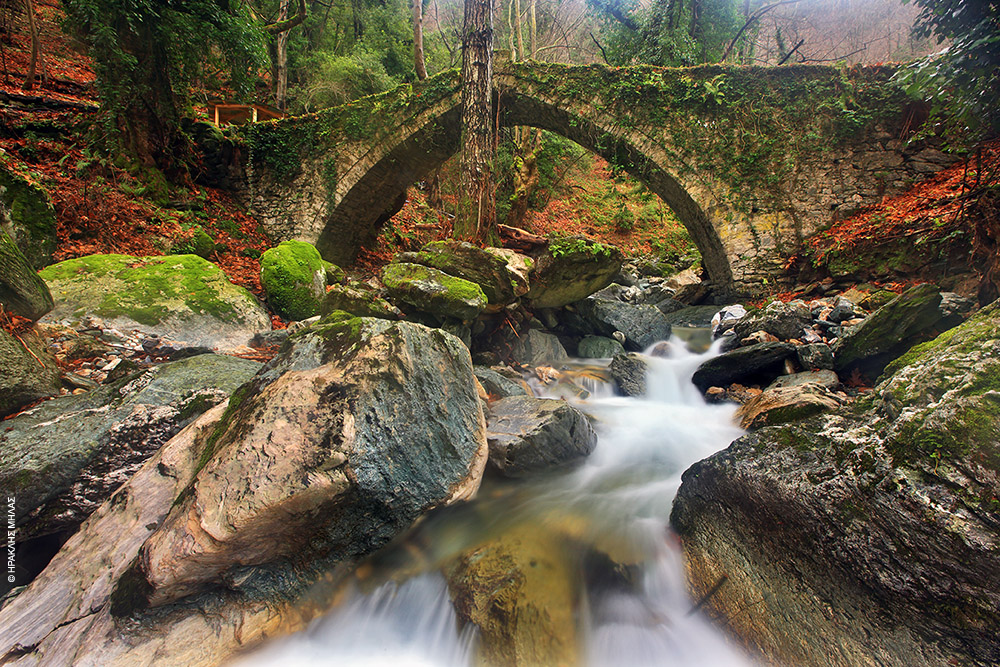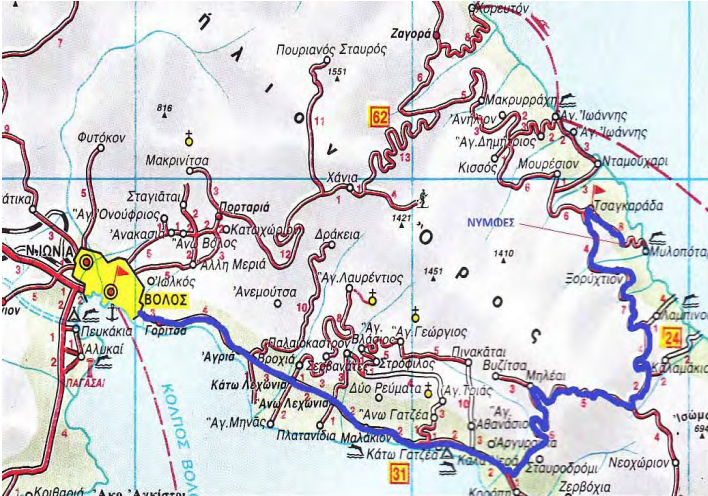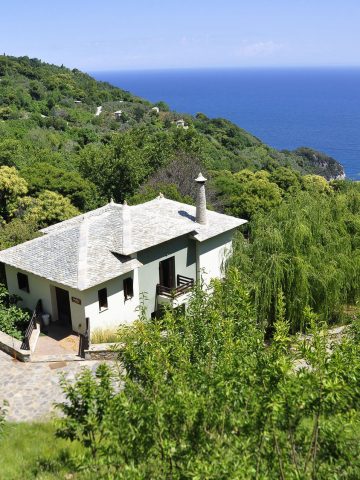Pelion
Pelion is a mountain in the Prefecture of Magnesia next to the city of Volos, at a height of 1,624 meters. In Greek mythology was the summer residence of the gods and the homeland of the Centaurs. The whole mountain is full of forests with tall beeches trees, oak trees, plane trees, wild chestnuts trees, pine trees, and hybrids of fir. At lower altitudes there are cultivations with apple trees on the eastern slopes, olive groves in the south and very dense vegetation. Α particular characteristic is its hydrological nature as the eastern slopes receive very large amounts of rain and snow that exceed far from the average of lowland Thessaly. It is a tourist destination all year round, with a dense network of hiking trails and bays with small or large beaches with sand or pebbles.
There are more than 40 villages and settlements in Pelion. Pelion is full of magic and beautiful landscapes, all year round. It is an ideal destination for holidays and relaxation, for adventure and thrills. During the summer, the beautiful beaches invite you to their crystal clear waters for moments of coolness and enjoyment. Pelion is famous for the dew in the summer.
In winter, you can enjoy the snowy scenery and the Agriolefkes ski resort, near Hania, where you can ski at the perfectly organized ski slopes.

Pelion
Tsagarada
How to get there sooner

The most famous place of Pelion, all over Greece and abroad. It is located on the northeastern sides of the mountain at an altitude of 500 meters. From this height, it has a magnificent view of the Aegean with a sea horizon in such a distance that the visitor is never sure where the sea ends and where the sky begins. The Tsagaradiotic sunrise as well as the full moon are miracles of the Pelion that make visitors amazed. Therefore, the name Tsagarada in Slavic means “beautiful view”.
Tsagarada is a large village that gives the impression that it is built along the ring road because the houses that look on both sides of the road occupy a distance of 5 km. Most of the village is hidden in the dense vegetation and behind ridges and slopes. The residential area extends mainly to and the foot of the mountain and the various beaches. It consists of four districts: Agios Taxiarches, Agia Paraskevi, Agios Stefanos and Agia Kyriaki. The beaches of Mylopotamos, Fakistra, and the nearby Aegiannis, Plaka, Papa Nero and Damouchari offer unforgettable pleasures and unique emotions to the visitors.
Karavostasia, Tsagarada
Our Village
Regarding the first place of the settlement, it is confirmed that it was on the beach (like most of the villages of Pelion) and in the “Paliokastro” location that is located above the small bay of “Fakistra”. Earlier in this place, locals found ruins of ancient buildings, tombs, jars with an older date of 1363, and the archaeologist – Arvanitopoulos, who made rough excavations in this part, discovered the ruins of a limestone castle, Greek tombs and old coins. The latter concluded (there are records in the Archaeological Society of 1910) that the area was inhabited at the beginning of the Macedonian period as well as in Byzantine times. As it can be seen in Byzantine times, the village would be a feud of a Byzantine master and later it would fall into the dominion of the Venetians because in Karavostasia was mainly found the ruins of technical works of harbor, Venetian era and style were found. The older ones call it Karatsaksia which means the place where the ships were crashing. This seems real, since nowadays nothing could characterize the site as a port. But if you find bourine witnesses in the area you will immediately understand why this bay is called like this.




